Idea by
Oscar Cruz García
https://www.instagram.com/oscarcruz_architectureoffice/
Call for ideas 2021
The traveler's antiquarian
The traveler's antiquarian
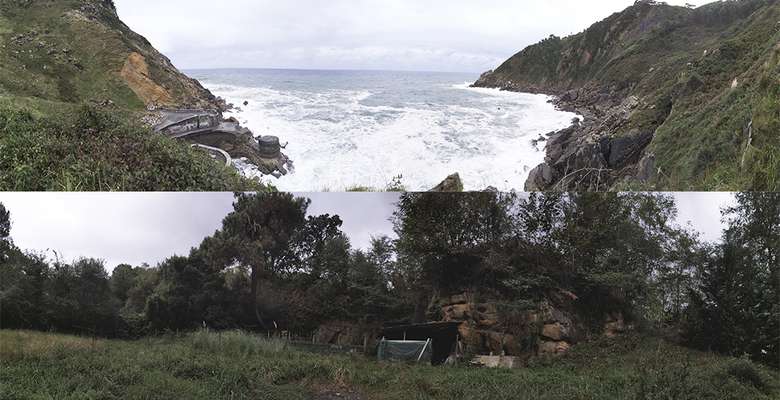
- Site-specific cases
A century ago, a large part of the buildings that inhabit the romantic areas of San Sebastián lay in the bowels of Mount Igueldo. Hidden, deconstructed and turned into virgin stone, they awaited the moment of its extraction. One hundred years later, the Igueldo quarries are only a memory of the past. Closed, forgotten, almost lost. It is known that for centuries, the Colosseum was used as a quarry for other monuments in Rome, there are stones from the Colosseum in the Cathedral of St. Peter, in St. John Lateran or in the Palazzo Venezia.
The project is based on the search for large degraded natural territories with a vocation to regain their nature as a natural landscape, challenging the growing occupation and depletion of the land due to rapid consumption cycles that cause future ruins, condemning the landscape to obsolescence and consequently that fall into oblivion.
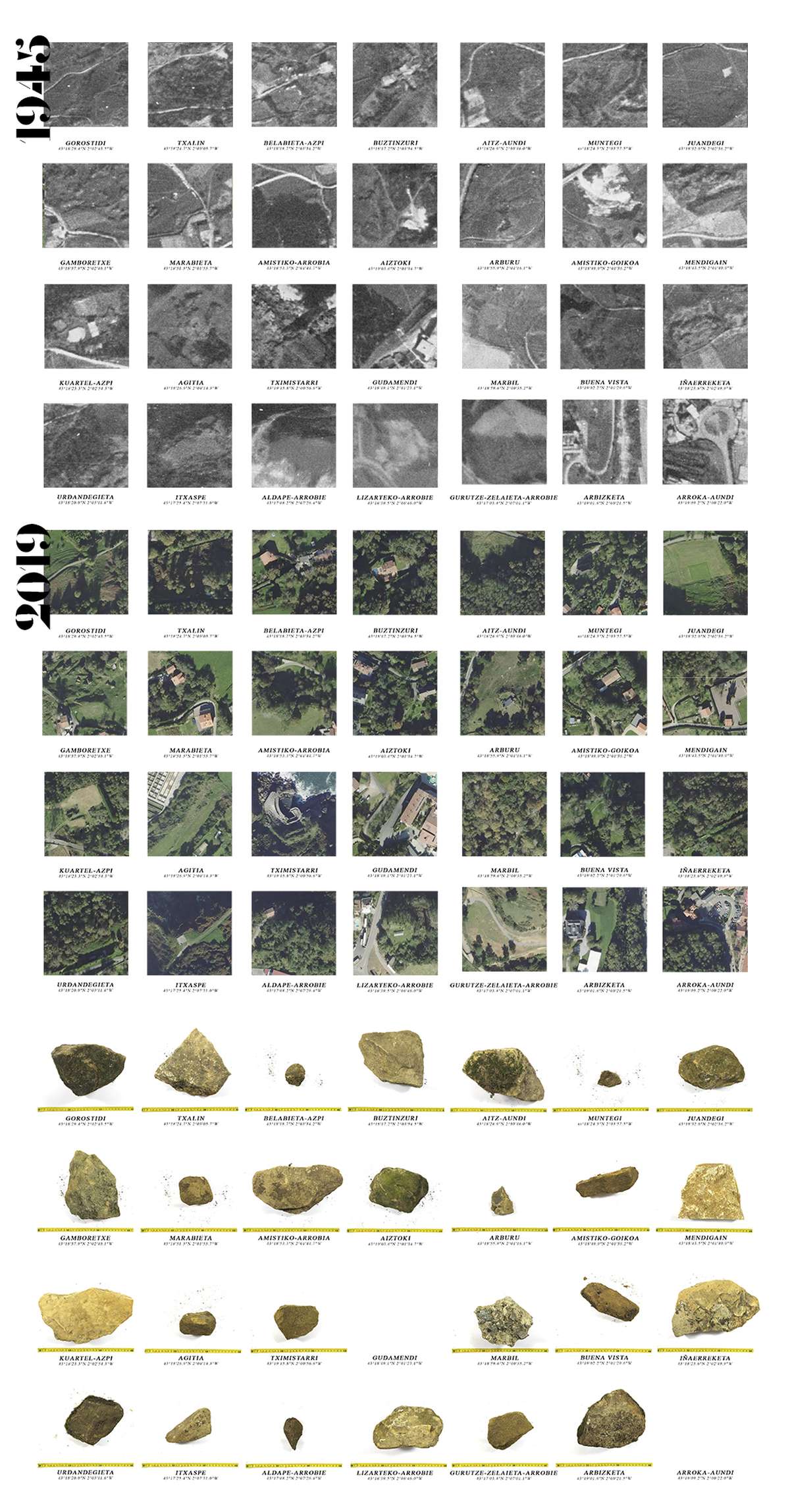
Like the Roman amphitheater, the Igueldo sandstone is found throughout Donostia. Not only have those who modeled the pieces disappeared, but the landscape has changed significantly. There is no "X" that marks the exact place, where decades ago there was one on the mountain, muddy and in the open, or a voracious bite, today there is only a forest or a meadow covered with vegetation.
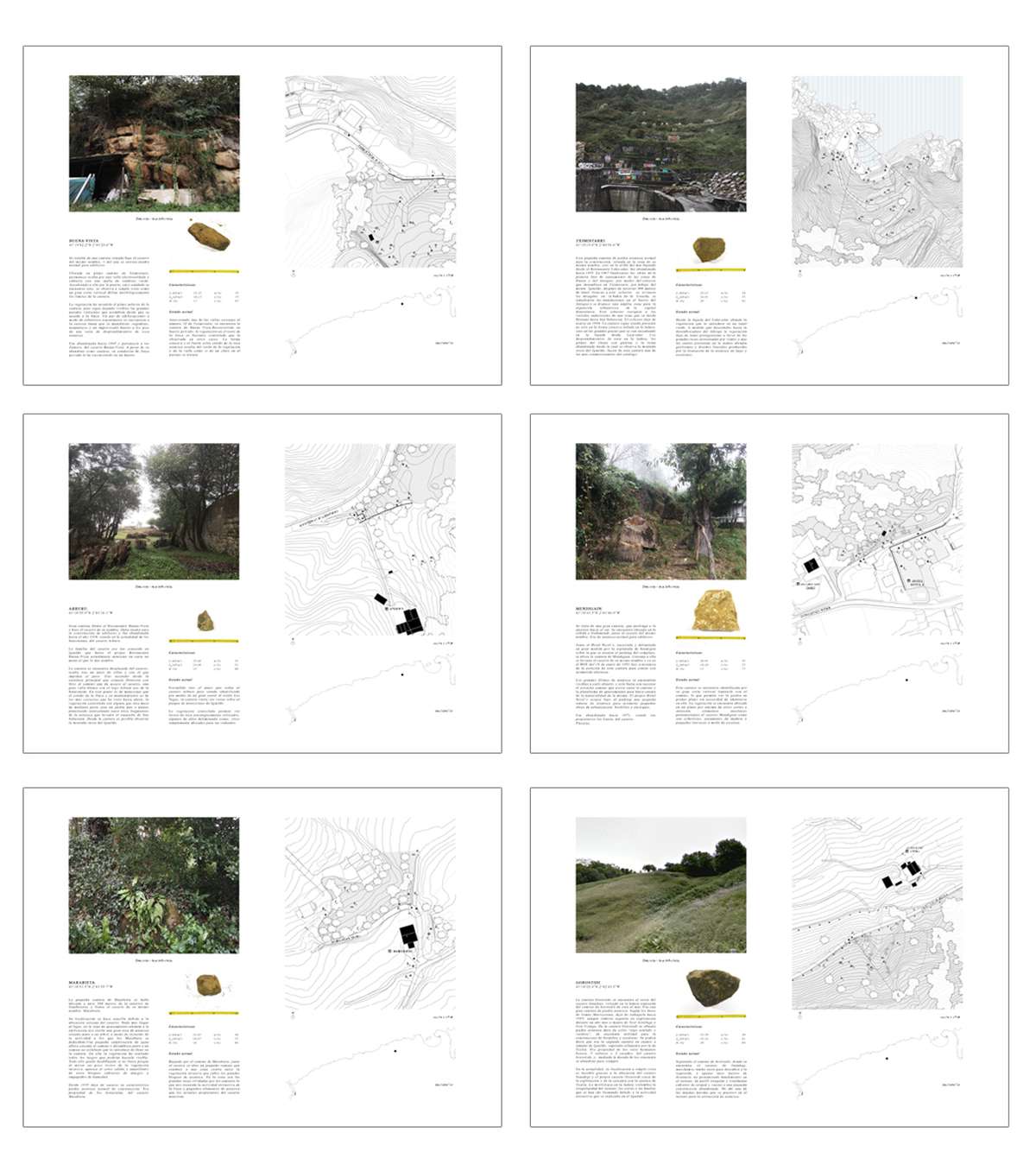
The project begins with a search for degraded and forgotten industrial landscapes, creating a temporal cartography capable of predicting its future.
The project consider the vestige as the final state of a process of balance between persisting and decaying, in which ruin does not yet mean the unconditional triumph of nature, but an intermediate point to rethink the value and temporality of the “genius loci” challenge the advance of cities capable of ending the depletion of natural resources.
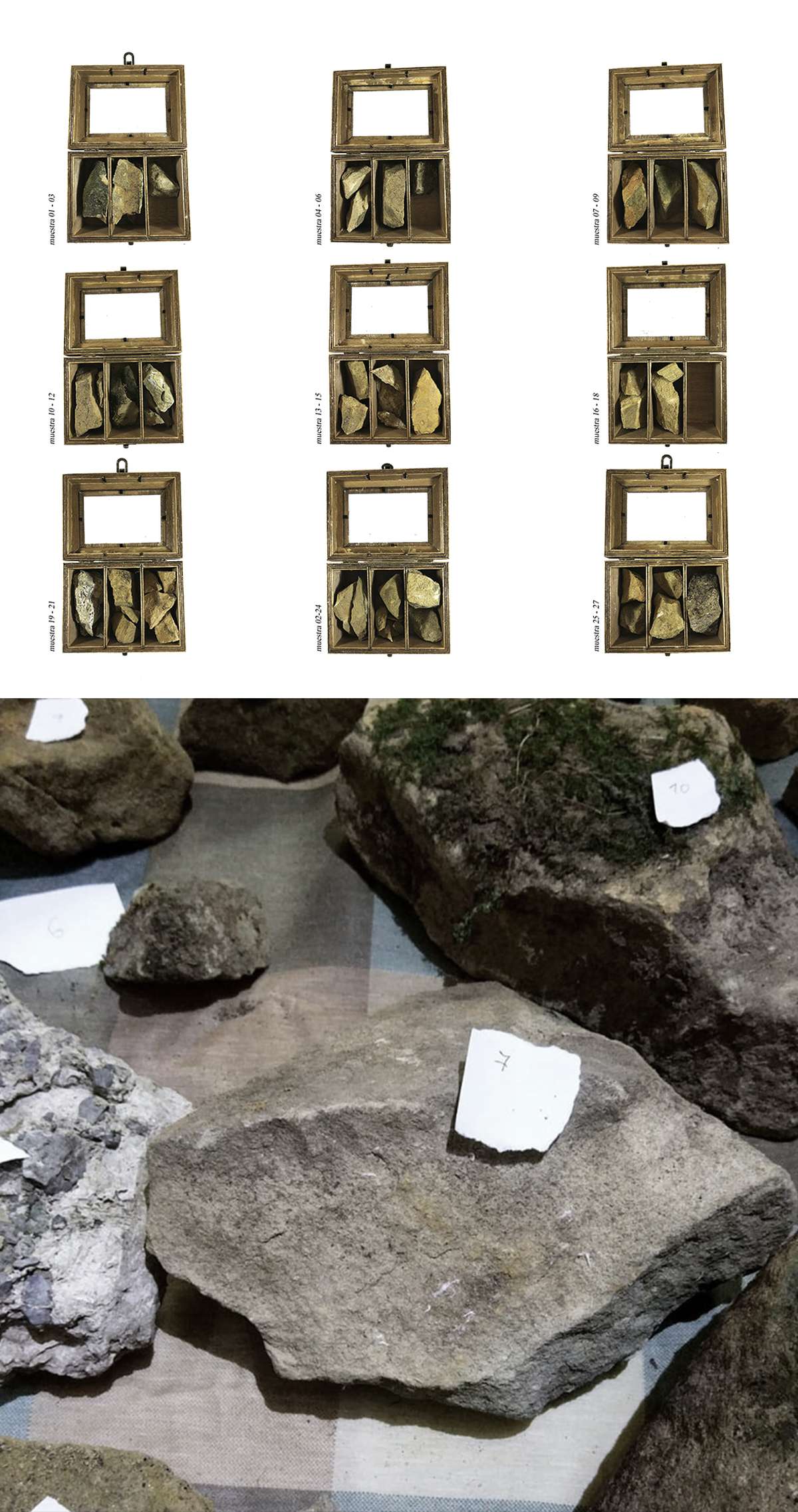
Type B altered samples are extracted from the quarries to know the different degree of depletion and ruin of the landscape of the Basque country, as well as its composition based on the exposed environments.

In the year 2030 it is estimated that the Rezola cement plant and quarry will end its production due to the pressure exerted by the EU Directives on reducing CO2. The death of cement will leave fifty industrial corpses and an anthropic ruin that has a strong capacity for transformation on the territory. An osteological system impossible to recycle.

The Landscape Recovery of the industrial territory in the Basque Country search the invariants of the landscape, the places with a strong emotional and psychological charge that allows to maintain the memory of an industrial past without the need to mortgage the value of an uncertain nature and the landscape. The project manages to stop the expansion and speculation of the city towards lands that never belonged to it.
The traveler's antiquarian
The traveler's antiquarian

- Site-specific cases
A century ago, a large part of the buildings that inhabit the romantic areas of San Sebastián lay in the bowels of Mount Igueldo. Hidden, deconstructed and turned into virgin stone, they awaited the moment of its extraction. One hundred years later, the Igueldo quarries are only a memory of the past. Closed, forgotten, almost lost. It is known that for centuries, the Colosseum was used as a quarry for other monuments in Rome, there are stones from the Colosseum in the Cathedral of St. Peter, in St. John Lateran or in the Palazzo Venezia.
The project is based on the search for large degraded natural territories with a vocation to regain their nature as a natural landscape, challenging the growing occupation and depletion of the land due to rapid consumption cycles that cause future ruins, condemning the landscape to obsolescence and consequently that fall into oblivion.
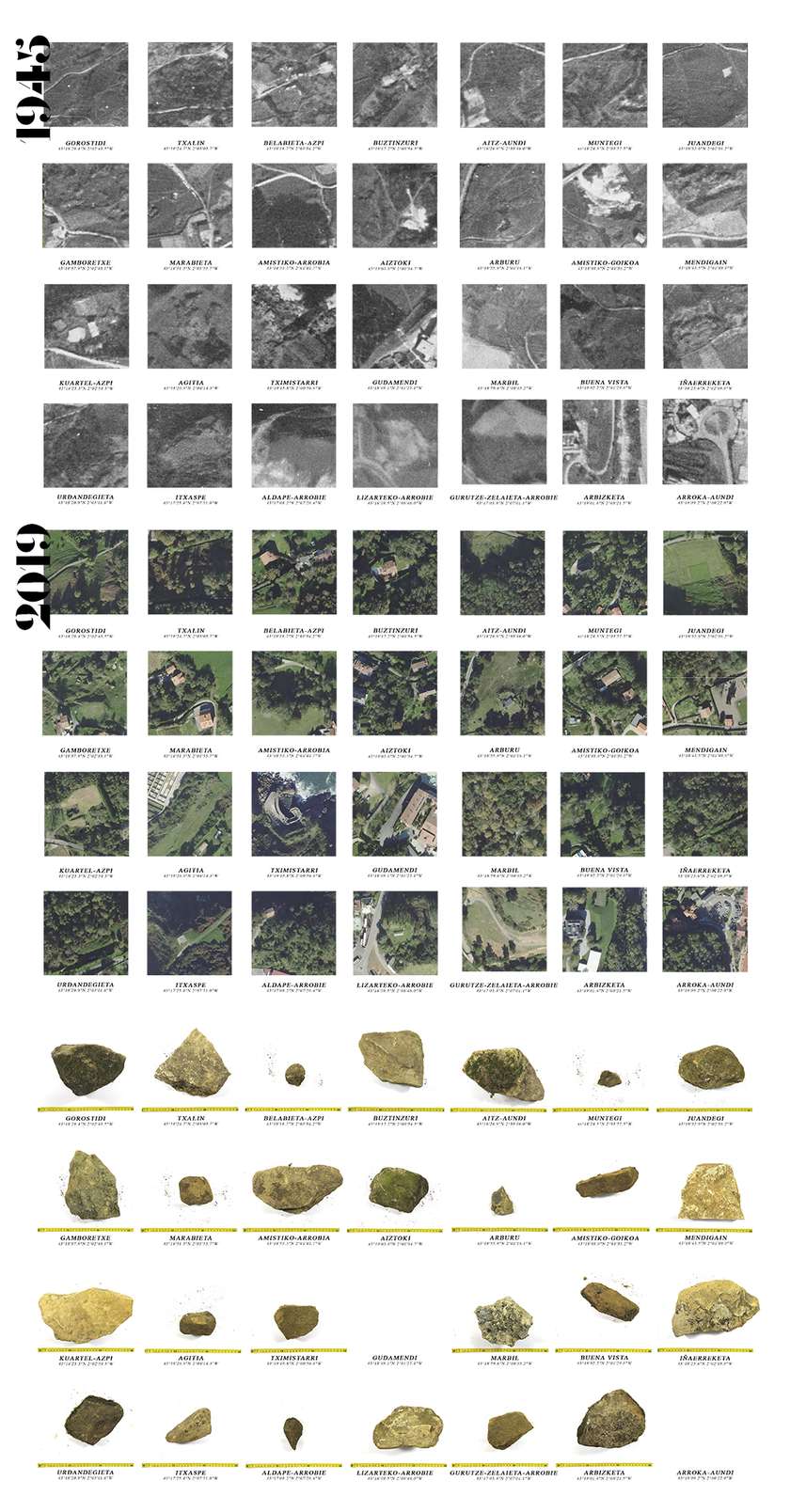
Like the Roman amphitheater, the Igueldo sandstone is found throughout Donostia. Not only have those who modeled the pieces disappeared, but the landscape has changed significantly. There is no "X" that marks the exact place, where decades ago there was one on the mountain, muddy and in the open, or a voracious bite, today there is only a forest or a meadow covered with vegetation.
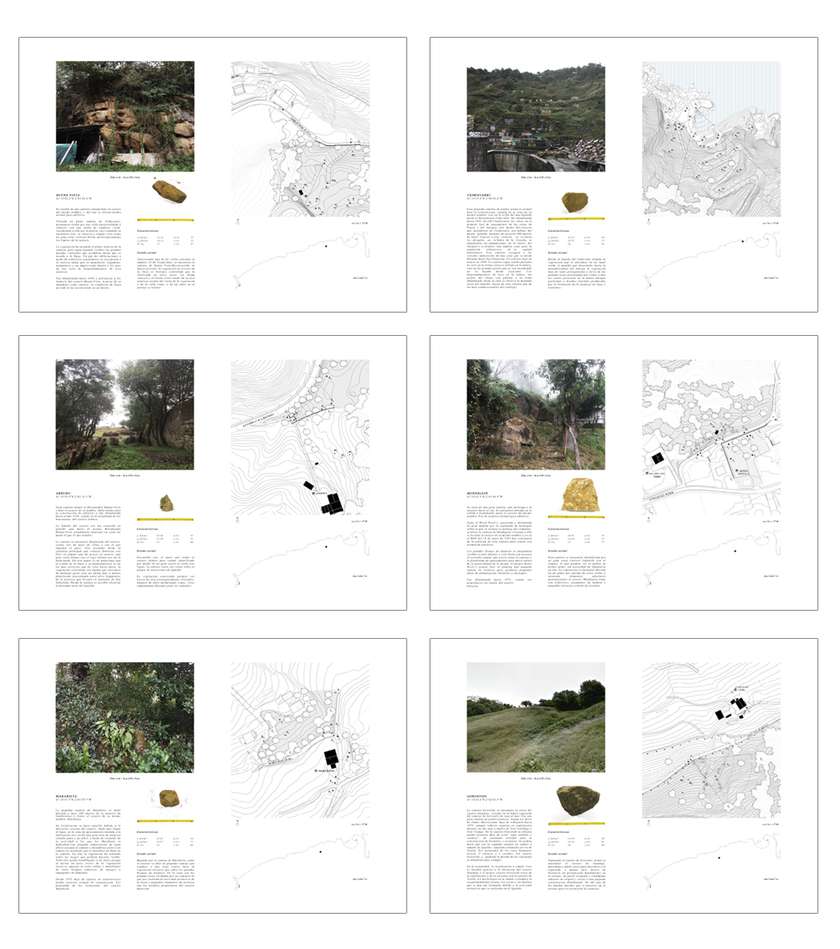
The project begins with a search for degraded and forgotten industrial landscapes, creating a temporal cartography capable of predicting its future.
The project consider the vestige as the final state of a process of balance between persisting and decaying, in which ruin does not yet mean the unconditional triumph of nature, but an intermediate point to rethink the value and temporality of the “genius loci” challenge the advance of cities capable of ending the depletion of natural resources.
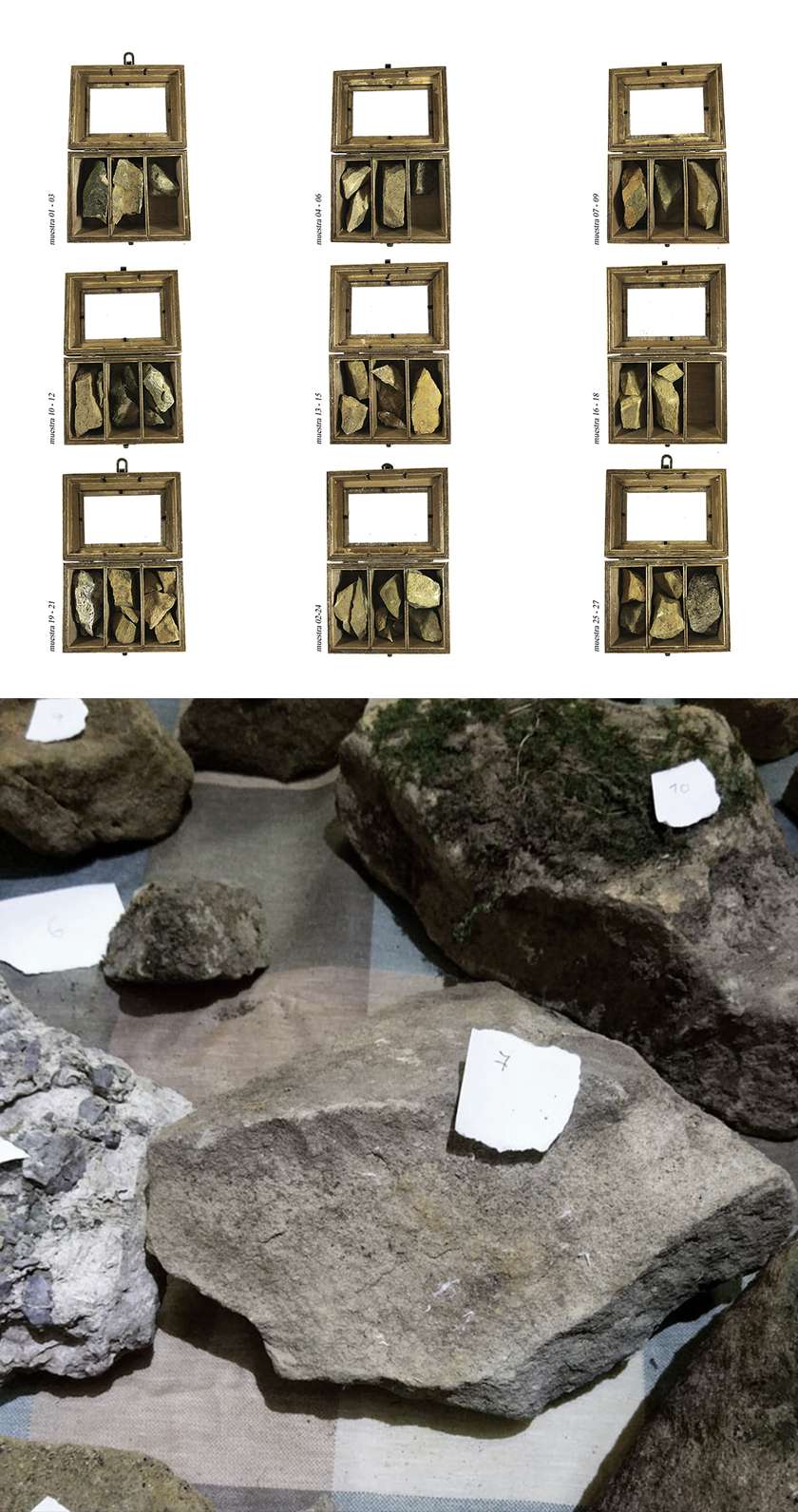
Type B altered samples are extracted from the quarries to know the different degree of depletion and ruin of the landscape of the Basque country, as well as its composition based on the exposed environments.

In the year 2030 it is estimated that the Rezola cement plant and quarry will end its production due to the pressure exerted by the EU Directives on reducing CO2. The death of cement will leave fifty industrial corpses and an anthropic ruin that has a strong capacity for transformation on the territory. An osteological system impossible to recycle.

The Landscape Recovery of the industrial territory in the Basque Country search the invariants of the landscape, the places with a strong emotional and psychological charge that allows to maintain the memory of an industrial past without the need to mortgage the value of an uncertain nature and the landscape. The project manages to stop the expansion and speculation of the city towards lands that never belonged to it.